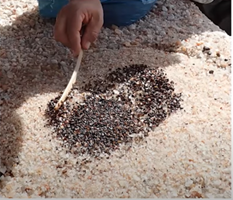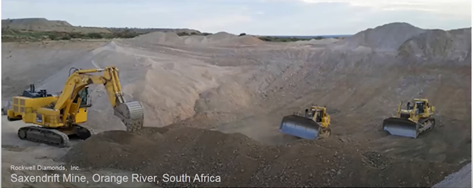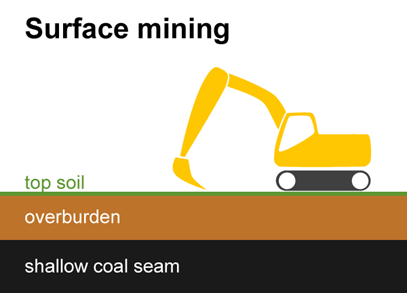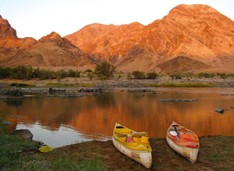How Are Diamonds Mined?
- Nabilah Ghani
- Mar 24, 2021
- 5 min read
Do you know how diamonds are mined? Diamond is found in two types of deposits. Both of the deposit requires specific mining techniques. Primary deposit diamonds are usually found in kimberlite pipes which involves Open pit or underground mining. Diamonds that have dispersed from their initial location due to erosion are known as secondary deposits. This Secondary deposit requires alluvial and surface mining.
Open-Pit Mining (Primary mining)
The process of Open-pit mining involves Drilling, Blast, load, haul and assembling of the deposit. Open-pit mining is a form of surface mining in which minerals are extracted from an open pit on the surface. Open-pit mining is the most common method of how diamonds are mine from mineral extraction in the world, and it does not require the use of extractive methods or tunnels. When mineral or ore deposits are located very close to the earth's surface, this surface mining technique is used. Open-pit mining is the most common method of mineral extraction in the world, and it does not require the use of other extraction methods. When mineral or ore deposits are located very close to the earth's surface, this open mining technique is used hence this is how diamonds are mined in open-pit mining

picture courtesy: Angloamerican
Photo courtesy: Handout /BHP Billiton Photo courtesy: Rio Trinto An aerial view of the Ekati diamond mine in Canada Argyle Mine in Western Australia is known for its pink and red diamonds
Open-pit Mining operations
Open-pit mines are how diamond are mine on benches varying in size from four to sixty meters in length, depending on the size of the machinery used. Most open-pit mine walls are angled and have measures to prevent landslides from forming within the construction area. The ‘batter' is the incline portion of the wall, and the ‘bench' or ‘berm' is the flat part of the step. In certain situations, de-watering bores are drilled horizontally into the walls to relieve water pressure, which can weaken the walls if not treated correctly. A haul road is dug along the pit's side to serve as a ramp for ore-carrying vehicles to access the mine. The construction of the physical mine infrastructure is accompanied by boring, drilling, blasting, and other development activities. Waste rock is piled at the pit's edge and spreads both horizontally and vertically. This is referred to as a "waste dump." To prevent rocks from dropping into other sections of the site, the waste dump is also tiered and stepped.
Image courtesy: geothermal-fossil-energy
Underground mining
Underground mining is a method of extracting ore from underneath the earth's surface in a clean, cost-effective, and waste-free manner. Underground mining is another technique of how diamonds are mine. A shaft, or vertical tunnel used to connects a surface mine to an underground mine. There is various type when it comes to underground mining however the common ones are blocked caving and sub-level caving. Both methods are how diamonds are mine.
Block Caving
Block caving is a mining method that requires tunneling underneath of an ore body and then allowing it to collapse under its own weight, allowing access to deeper deposits. One of the mine which is using the block caving method is in Western of Australia. It is known that the underground block-cave project is huge and complicated, taking over 40 kilometers of tunneling. This is how diamonds are mine by Rio Tinto. Rio Tinto is known for mining and metal company that is in charge of the project. According to one of the Rio Tinto spokesperson, the Argyle mine will be the first in Western Australia of how diamonds are mine using block caving.
photo courtesy: Groundthruthtrekking Photo Courtesy:Rio Tinto
Sub level Mining
Photo Courtesy: Pharta D Sharma
The first part of this method's name comes from the fact that work is done on intermediate levels (i.e., sub-levels) between the main production levels. It is based on the same basic method to block caving mining, but the caves are smaller and do not last as long. This method of how diamond are mine is easier to implement than block caving because the required infrastructure is already in place.
Alluvial mining (secondary deposits)
Technique- Panning and sieving
Some mining firms still use alluvial mining for how their diamonds are mine, but in places like Africa and South America, it's more often used as a source of income for villagers miners. Alluvial mining can be a very straightforward process. The process in small-scale alluvial mining requires digging and sifting into materials like silt, clay, sand, and gravel using shovels, sieves, or the miner's bare hands. Scale artisanal method such as Panning and Sieving is used for the secondary deposit of how the These deposits are usually found in rivers afterwards these secondary materials would need to be washed and sorted. Panning is one of the technique on how diamonds are mine However, these techniques are not safe and productive as it’s usually costly and done illegally.
Process of Panning
Image courtesy: Rockher Image Courtesy: GIA
While alluvial mining is an old technique, it is still widely used today. It is known for the simpler method of how diamond are mine. The process of panning involve A typical circular pan with a flat bottom and sloping sides that is light. During the panning process, the plate is halfway filled with alluvial deposits. The pan will then be shaken underwater, allowing the heavier particles to settle and the lighter material to rise to the surface. The pan is tilted after that, and the light surface content is cleared away. This process is repeated until all that is left are thick black sands and diamonds. Afterwards, the pan will be slowly flipped to remove the content on the ground. The material will be dried up on the ground and the diamond is extracted. Sieving is another method that is similar to the process of panning. Sieving requires the metal or plastic sieve. these methods are practical and easy for labourers in the villagers hence they are known to choose these method for how their diamond are mine
Strip Mining
The Strip mining process involves the removal of the thin layer of soil overlying above the preferred secondary deposit. Strip mining is another technique in alluvial mining of how diamond are mine. This process is also known as “overburden removal” Heavy machinery such as Strip mining is the scraping a thin strip of overburden (earth or soil) over the desired deposit, removing the extracted overburden behind the deposit, extracting the desired deposit, forming a second, parallel strip in the same fashion, and depositing waste materials from the second (new) strip onto the first strip. Strip mining is how diamonds are mine.
Image courtesy Rockewell Diamonds
Image Courtesy:
example of the Strip mining process
Process of Dredging Mining
Dredging - is one of the method of how diamonds are mine. The method of mining resources from the bottom of a body of water, such as rivers, lakes, or oceans, is known as dredging. removing soil and rock from above a layer or seam then removing the exposed mineral. Diamonds were discovered in Namibia's Orange River in recent decades, and geologists knew there was a strong possibility they could also be present at sea. It is known that the underwater gems turned out to be among the most precious stones on the planet hence dredging is how diamonds are mine is some areas that prefers underwater gem
Image courtesy: De Beers Group
Image courtesy: Ron Swilling
Source:
















Comentarios